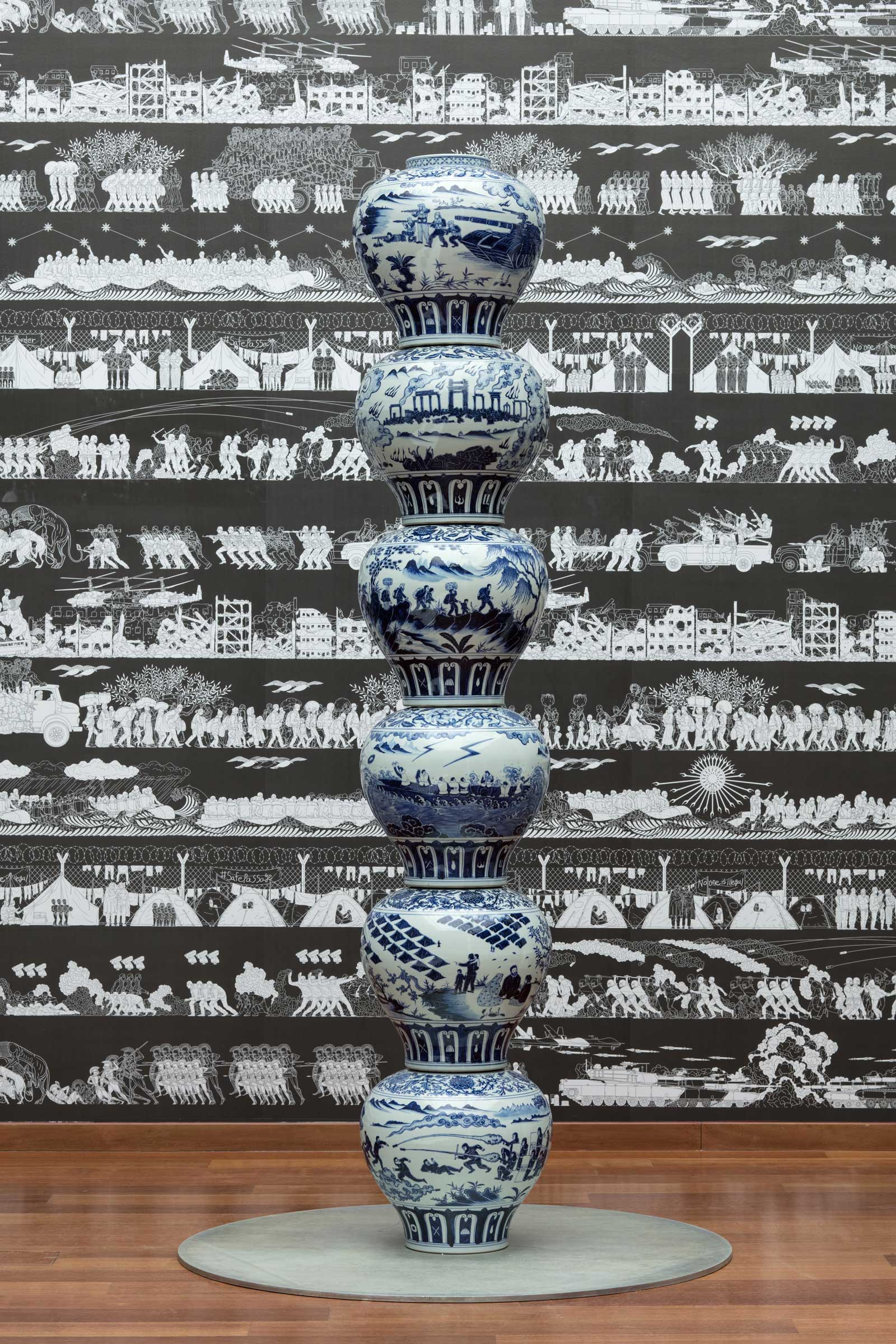UTA Artist Space

This July, a decade after he collaborated on the controversial Bird’s Nest stadium for the 2008 summer Olympic Games in Beijing, Chinese artist Ai Weiwei has completed another architectural collaboration, this time in the United States
Installation view of Cao Humanity
Photo by Jeff Mclane
His first in the US, the project was the transformation of an 80-year-old, 372 square-metre former diamond cutting factory and its offices into the UTA Artist Space in Beverly Hills. Since 2016, Ai has been represented by the visual arts arm of the United Talent Agency, a gallery and incubator for collaboration across the fields of fine art, film, writing and music. He worked with its director and site architect Daveed Kapoor on everything from the layout and floor plan to interior architectural elements like doors and exterior details, suiting it to both exhibition and performance while preserving its original 1940s industrial character.
Ai took a three-pronged approach to the renovation: optimising existing conditions, considering who would use the space and how they would behave in it, and creating a design that would disappear behind the artwork. Inside, he suggested proportioning the different rooms with a view to versatility. Now, it includes a 186 square-metre gallery, including one wall set at an extreme angle, and a smaller triangular room in which to screen videos. They refreshed its web of wooden roof beams and ripped out the low office ceilings, but preserved its low-slung poured-concrete facade, pale concrete flooring, two original skylights — and added a third — and the extant steel casement windows now set into almond shell-blasted concrete walls. Considering space in this way isn't new to Ai. As an artist, writer, editor, filmmaker and political activist, or as he puts it, ‘street fighter’, he always designs and curates his exhibitions with the exhibition space in mind from the start, instead of treating it as a discrete element of the show.
In July, the gallery debuted with One Shot, an exhibition of large works by mid-century colour-field artists. In October, Ai mounted his own work in a second show titled Cao / Humanity, one of a trio of shows that went up simultaneously in Los Angeles. Slathered in the artist's wallpaper, sections of the wall depicted raditiating arms all giving the middle finger, while marble sculptures included panels of carefully articulated blades of grass, or cào, which also means “to fuck” in Chinese.
Will we see more of Ai’s architecture in future? ‘We quit architecture after 2008,’ the artist says, referring to the fallout over the Olympic stadium. ‘But we're still helping friends to design things, and every one of our shows and installations has to do with architecture, from the scale to the construction.’
When he first saw the UTA site, the warehouse had recalled for Ai his own spacious Beijing art studio, which was demolished by the Chinese government earlier this year. In 2010, the day after he furnished it, his Shanghai studio was also destroyed, for political reasons. So far, the authorities have not let Ai recover any of ‘the ruins’ of these spaces for fear that he will create artwork out of them. ‘Still today those ruins stay in a huge warehouse,’ the artist says. ‘They don't even know where to store it.’
Text / Shonquis Moreno
Images / Courtesy of UTA Art Space
Installation view of Cao Humanity
Photo by Jeff Mclane
Vases with Refugee Motif as a Pillar (2017)
Ai Weiwei
Installation view
Photo by Jeff Mclane
Iron Tree Trunk (2016)
Ai Weiwei
Photo by Jack Hems
Up Yours (2017)
Ai Weiwei
Camera with Plinth (2015)
Ai Weiwei
Vases with Refugee Motif as a Pillar (2017)
Ai Weiwei
Installation view of Cao Humanity
Photo by Jeff Mclane













